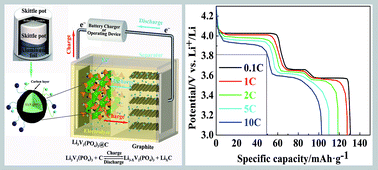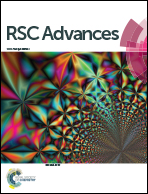Large-scale synthesis of Li3V2(PO4)3@C composites by a modified carbothermal reduction method as cathode material for lithium-ion batteries
Abstract
Carbon coated Li3V2(PO4)3 composites were prepared by a modified carbothermal reduction method. The method has the advantages of being simple and scalable, while the whole synthesis is devoid of any reducing/protecting gases, therefore, it can be directly carried out in muffle furnace. The obtained Li3V2(PO4)3@C composites have particles sizes from 500 nm to 3 μm, and with homogeneous carbon coating layer thickness of about 7 nm. The battery based on this Li3V2(PO4)3@C composites cathode exhibits a specific discharge capacity of 130.9 mA h g−1 at 0.1 C, and exhibits an initial specific discharge capacity of 102.8 mA h g−1 even at 10 C and almost keeps 96.6% of initial capacity retention after 500 cycles. The performance enhancement can be directly ascribed to the robust structure merits of the Li3V2(PO4)3@C composites synthesized by the modified carbothermal reduction method. Furthermore, the as-developed method has the potential to be expanded to other lithium transition-metal phosphates (such as lithium iron phosphate), which conventionally need to be sintered in reductive or protective atmospheres.



 Please wait while we load your content...
Please wait while we load your content...